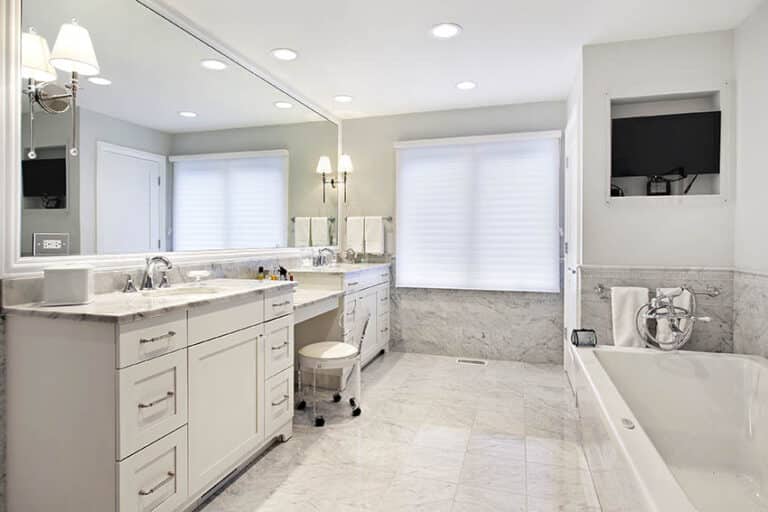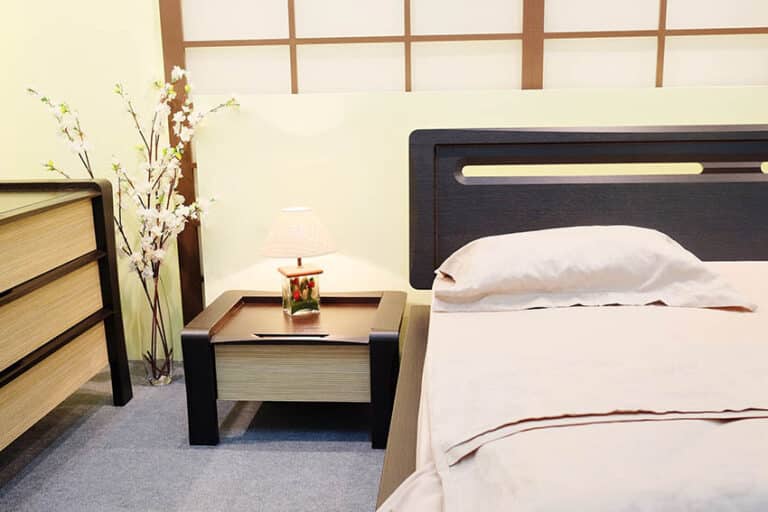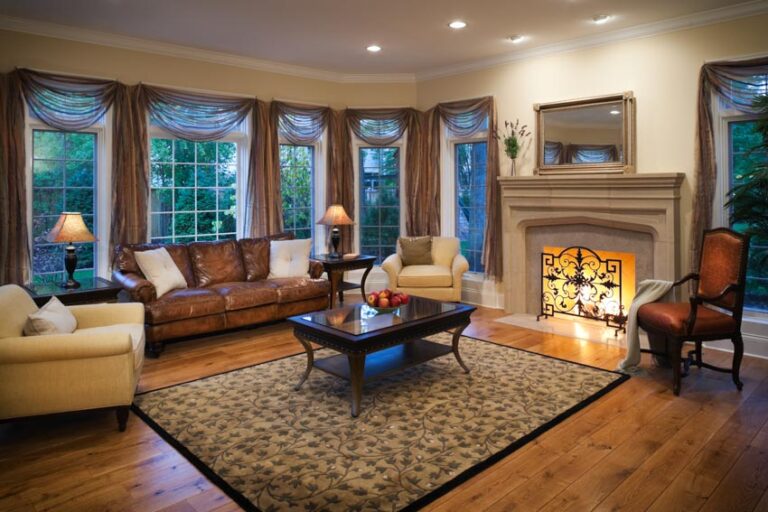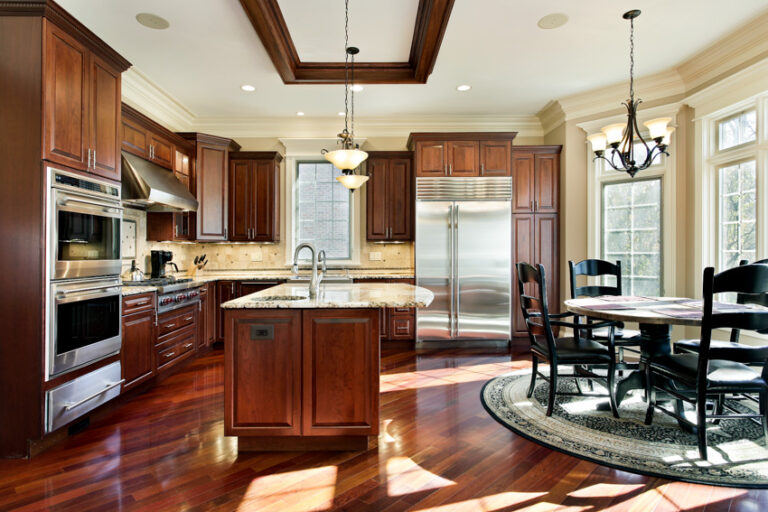SPC Flooring Pros and Cons
SPC flooring was created to replicate the look of real natural wood. Like luxury vinyl plank floors, SPC flooring provides many advantages that may make it a solid choice for your interior design.
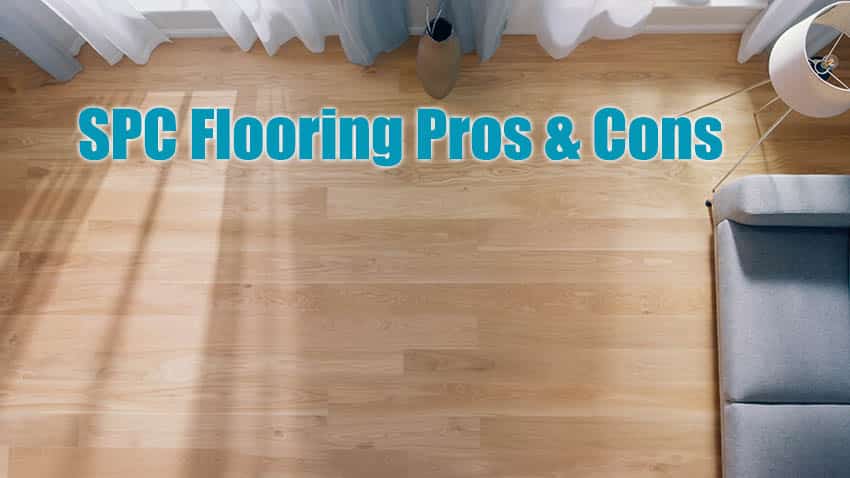
What Is SPC Flooring
SPC stands for stone plastic composite or stone polymer composite. It is a subtype of vinyl plank flooring. SPC may also be advertised as rigid vinyl plank, waterproof, or engineered luxury vinyl flooring.
Vinyl flooring typically has four layers. The bottom of the plank is an underlayment, which provides some cushion and sound reduction.
Next comes the core, which is the backbone or spine of the plank. A photorealistic design layer sits atop the core, lending the appearance of wood or stone to this man-made product. Finally, the top layer is a clear protective coat called the wear.
Most of the difference between types of vinyl floors comes down to the core. The defining feature of SPC is its rigid core, which is made of limestone, polyvinyl chloride, and stabilizing agents.
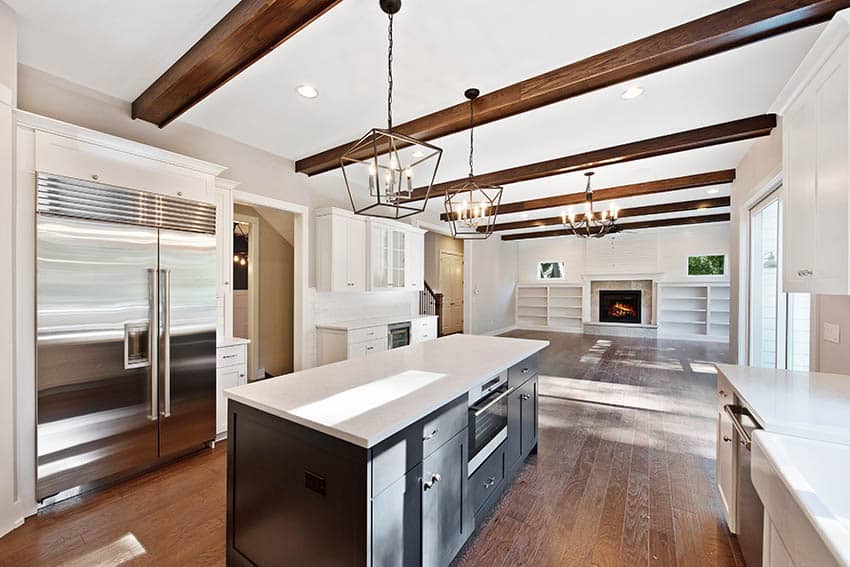
SPC Floor Pros
Waterproof – SPC flooring is impervious to the effects of water, making it an excellent choice for basements, laundry rooms, bathrooms, and kitchens. Not only are the planks themselves entirely waterproof, but the core is impervious to moisture-related expansion or contraction.
Easy to install – DIYers love SPC floors because they are so easy to install. Most products feature ‘snap-together’ installation, meaning no nails or glues are needed. Instead, the planks are designed with interlocking grooves. It can be installed over any hard surface without the need for extensive preparation.
Easy to cut – Cutting SPC planks to size couldn’t be easier. While wood, tile, and stone require special power tools, all you need is a utility knife. Simply score the plank you want to cut, then flip it over and bend it away from the score line. The plank will snap into two pieces with a remarkably even cut line.
Very durable – Compared with other floor products, it is incredibly durable. Most manufacturers offer a 15 year warranty. With proper maintenance, SPC can last up to 20 years.
Ideal for high foot traffic – SPC is ideal for use in high-traffic environments, and for this reason, it is popular in commercial construction.
In residential construction, it is common to see SPC installed in hallways, kitchens, and bathrooms because of its unique ability to stand up to wear and tear. Even heavy furniture won’t dent SPC floors.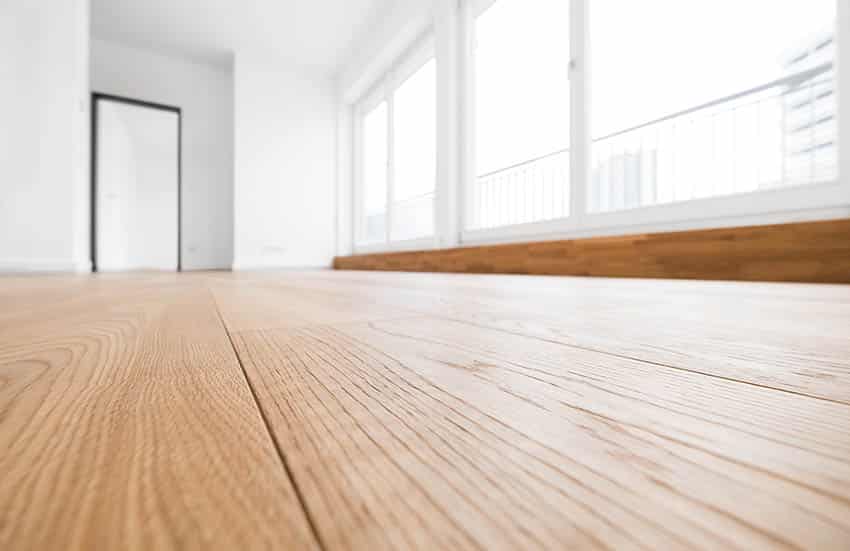
SPC Floor Cons
More expensive than laminate – SPC flooring is considered a luxury product, which is more expensive than laminate or other vinyl floor products. However, it is significantly less expensive than the natural materials it mimics.
Less comfortable than other flooring types – While the rigid core of SPC makes it incredibly durable and wear-resistant, it also makes this type of flooring less comfortable and accommodating underfoot than more heavily cushioned choices.
How Much Does SPC Style Floors Cost?
The cost of the material for a new SPC floor is calculated per square foot. Currently, SPC flooring can be purchased for as little as $3, with more expensive products costing up to $8 per square foot.
The average bathroom is around 40 square feet, so expect to pay between $120 and $320 for materials alone.
If you choose to install SPC in a standard-sized kitchen (around 100 square feet), the cost for materials will be between $300 and $800.
While this material is more expensive than some other products, it is easy to install and requires minimal floor preparation, so you can likely install it yourself to save on labor costs.
SPC Popular Questions

Is SPC a Good Flooring Choice?
If durability, longevity, and ease of installation are important to you, SPC flooring is a great choice. This luxury vinyl flooring can reproduce the look of natural materials without the extra cost and upkeep.
However, if you are looking to add value to your home, natural stone or hardwood flooring is a better choice.
Is SPC Better Than Laminate?
Many people find laminate flooring to be more comfortable to stand on than vinyl flooring products. The core material of laminate is usually fiberboard, making it susceptible to moisture-related damage such as mold and mildew, while SPC resists this kind of damage.
The process used to create laminate flooring relies less heavily on toxic chemicals than SPC. Stone plastic composite is more expensive than laminate.
Which is Better SPC or WPC for Floors?
In most cases, SPC can be considered an improvement on WPC (wood plastic composite). The difference between these two products is the content of their respective cores.
While SPC’s rigid stone core is unaffected by moisture and changes in temperature, vinyl planks with a wood core are susceptible to shrinking and expanding with the weather.
Should moisture permeate the planks, the wood core will warp, producing an uneven and unsightly floor that needs to be replaced. With SPC, on the other hand, the core is indifferent to water and will not warp or change shape.
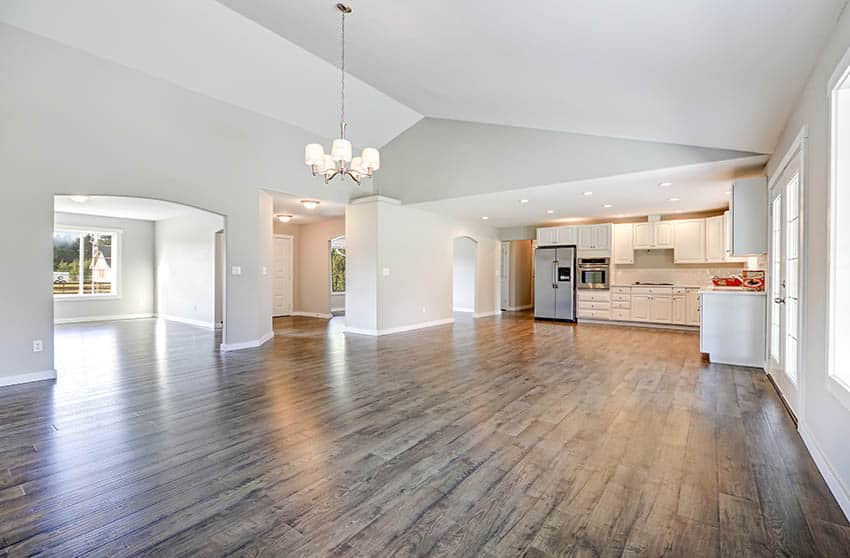
Does SPC Need Underlayment?
SPC flooring can be installed on any hard surface, including concrete and tile. While leveling may be necessary if the floor is wildly uneven, small irregularities do not need to be leveled before it can be installed.
It does not require a specific subfloor because underlayment is integrated into the bottom layer of the product.
Is SPC Toxic?
Certain types of SPC flooring may release Volatile Organic Compounds (VOCs). Check with the manufacturer to ensure that it is free of phthalates and acetaldehyde that come from the production of plastic products. Most are free from formaldehyde as it is not part of the chemical makeup.
Volatile organic compounds, called VOCs for short, have been associated with adverse health effects in both the short and long term.
The list of conditions linked to high VOC exposure includes respiratory issues and skin irritation. These compounds are released from common household products via a process called ‘off gassing’.
As consumer awareness rises, manufacturers are responding with changes to their production process, reducing the amount of VOCs emitted by their products.
If you want to avoid off-gassing, you will need to choose a natural material for your flooring, such as wood or stone. All vinyl floor products will release VOCs to a greater or lesser extent.
The majority of compounds are released into the air during and shortly following installation. For this reason, it is important to keep the area well-ventilated for the first several days following the installation of your new floor.
While some products are advertised as being ‘low-VOC,’ this isn’t an official designation. A specific chemical that has been linked with negative health outcomes is phthalate. Manufacturers have started producing phthalate-free SPC floors for health-conscious consumers.
What do you think about these SPC flooring pros and cons? If there is anything we missed, let us know in the comments. For more related content check out our gallery of living room flooring ideas.

